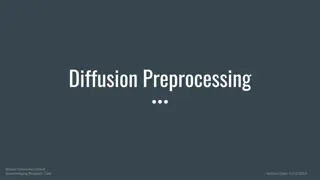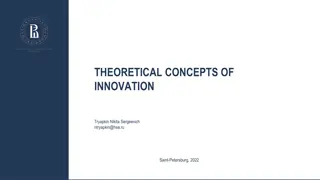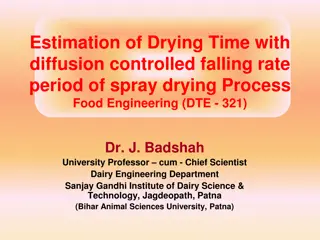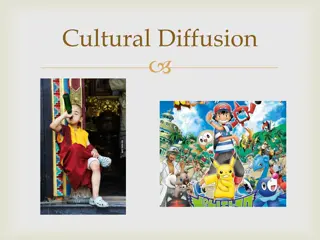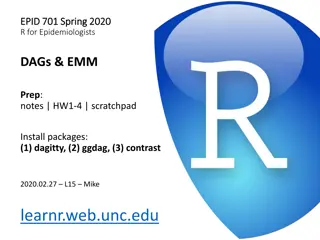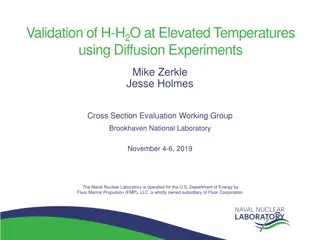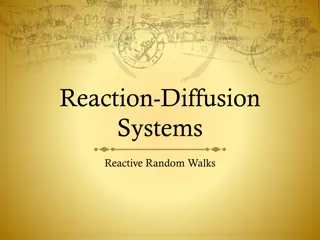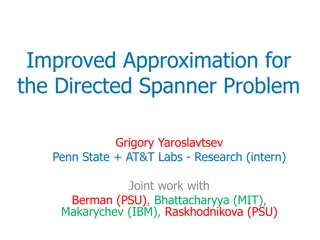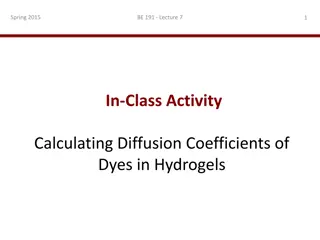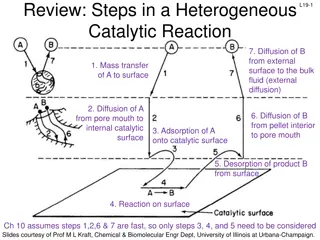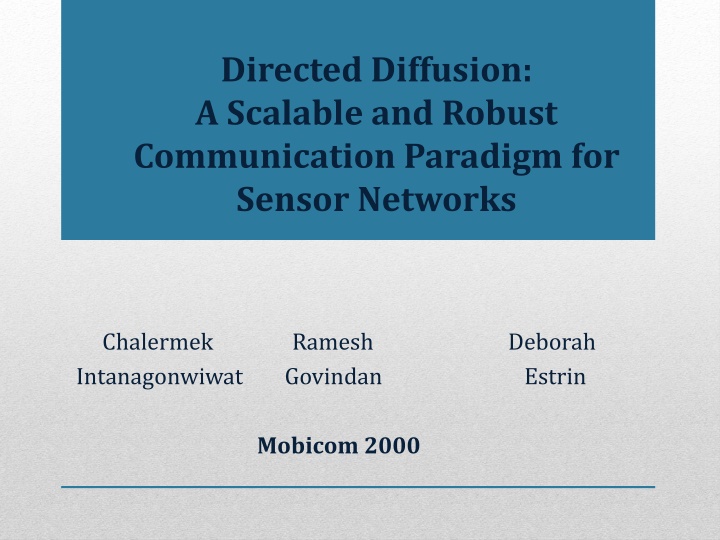
Communication Paradigm for Sensor Networks: Directed Diffusion Approach
Explore the Directed Diffusion communication paradigm for sensor networks, aiming for scalability, fault tolerance, and minimal energy usage. The proposed approach involves caching, data transformation, and efficient data routing. Learn about interest and event naming, interest propagation, and protocol reinforcement in sensor network communication.
Download Presentation

Please find below an Image/Link to download the presentation.
The content on the website is provided AS IS for your information and personal use only. It may not be sold, licensed, or shared on other websites without obtaining consent from the author. If you encounter any issues during the download, it is possible that the publisher has removed the file from their server.
You are allowed to download the files provided on this website for personal or commercial use, subject to the condition that they are used lawfully. All files are the property of their respective owners.
The content on the website is provided AS IS for your information and personal use only. It may not be sold, licensed, or shared on other websites without obtaining consent from the author.
E N D
Presentation Transcript
Directed Diffusion: A Scalable and Robust Communication Paradigm for Sensor Networks Chalermek Intanagonwiwat Ramesh Govindan Deborah Estrin Mobicom 2000
Capability of Sensor Nodes Small cheap nodes. Wireless communication . Significant computation. Caching
General Background Sensor node How many pedestrians do u observe in geographical region x ? Sensor node Sensor node Sensor node Result Sensor node
Motivation Sending data over long distances requires more energy. Aim : Scalability Fault tolerance Minimize energy usage Suitable for dynamic network
Traditional Approach Sensor node Sensor node Sensor node Central Node Sensor node Long Range Communication Looses Battery Sensor node
Proposed Approach Sensor node Sensor node Sensor node Intermediate node can :- Cache data Transform Data Direct interest towards previously cached data Sensor node Sensor node
Interest and Event Naming Query/interest/Task Description: 1.Type=four-legged animal 2.Interval=20ms //send back events every 20ms 3.Duration=10 seconds //for the rest 10s 4.Rect=[-100, 100, 200, 400] // location Reply: 1.Type=four-legged animal 2.Instance = elephant 3.Location = [125, 220] 4.Intensity = 0.6 5.Confidence = 0.85 6.Timestamp = 01:20:40
Interest Propagation Initial Interest Tries to determine which sensor data has the source Type=four-legged animal Interval= 1s Rect=[-100, 100, 200, 400] Timestamp =01:20:40 ExpiresAt =01:30:40 Interest Data Source Sink
Summary of the protocol Reinforcement C A B
Reinforcement Interest Data Source Sink
Reinforcement Initial Interest Increase gradient Type=four-legged animal Interval= 10ms Rect=[-100, 100, 200, 400] Timestamp =01:20:40 ExpiresAt =01:30:40 Source Sink
Gradient Types Binary Value Probabilistic forwarding load balancing
Interest Cache/Data Propagation Type Rect Timestamp Gradient Four-legged animal Instance- elephant [-100, 100, 200, 400] Neighbor 1- Data rate, duration 01:20:40 Last received matching interest Neighbor 2- Data rate, duration Local Interaction
Negative Reinforcement Option 1 B A C Wait for it to time out.
Negative Reinforcement Option 2 B A C Decrease the gradient.
Average Dissipated Energy 0.018 0.016 Flooding (Joules/Node/Received Event) Average Dissipated Energy 0.014 0.012 0.01 0.008 Omniscient Multicast 0.006 Diffusion 0.004 0.002 0 0 50 100 150 200 250 300 Network Size
Impact of In-network Processing 0.025 (Joules/Node/Received Event) Average Dissipated Energy Diffusion Without Suppression 0.02 0.015 0.01 Diffusion With Suppression 0.005 0 0 50 100 150 200 250 300 Network Size
Impact of Negative Reinforcement 0.012 (Joules/Node/Received Event) Average Dissipated Energy 0.01 Diffusion Without Negative Reinforcement 0.008 0.006 0.004 Diffusion With Negative Reinforcement 0.002 0 0 50 100 Network Size 150 200 250 300
Pros : Reinforcement maintains adequate number of high quality paths. It favors the best path. Energy efficiency improves. Resilient to Failures. Not a centralized approach. Caching helps improve response times.
Pros :Interest Cache/Data Propagation Type Rect Timestamp Gradient Last received matching interest Neighbor 1- Data rate, duration Neighbor 2- Data rate, duration Local Interaction All interactions are localized. Thus it is more robust and scalable.
Cons 1- Interest and Event Naming Query/interest/Task Description: Type=four-legged animal Interval=20ms //send back events every 20ms Duration=10 seconds //for the rest 10s Rect=[-100, 100, 200, 400] // location Cons : 1) The sensor nodes should be application aware before deployment. 2) The algorithm is limited by the size of the dataset Type Reply: Type=four-legged animal Instance = elephant Location = [125, 220] Intensity = 0.6 Confidence = 0.85 Timestamp = 01:20:40
Cons 2 Query like count the number of animals cannot take leverage of the event data rate. Reinforcement rule can lead to waste of resources ex: if a node send data better then more load on that node. Capacity of other nodes are wasted
Cons 3 - Multiple Sources Source 1 B D B s events A s events Y Source 2 C A
Cons 4 - Multiple Sinks Sink B X B s events A s events C A Sink Source Y
Discussions Piazza 1:30pm 1) In case of emergencies, there might be a lot of broadcasting that will take place. Congestion ? Effect on energy-efficiency ? 2) What happens if there is a malicious node in the network? 3) Tests were performed in simulation. 4) Unreliable transmission ? Use of acknowledgements.
Discussions 5) What is the location is not rectangular ? 6) Global Optima ?

